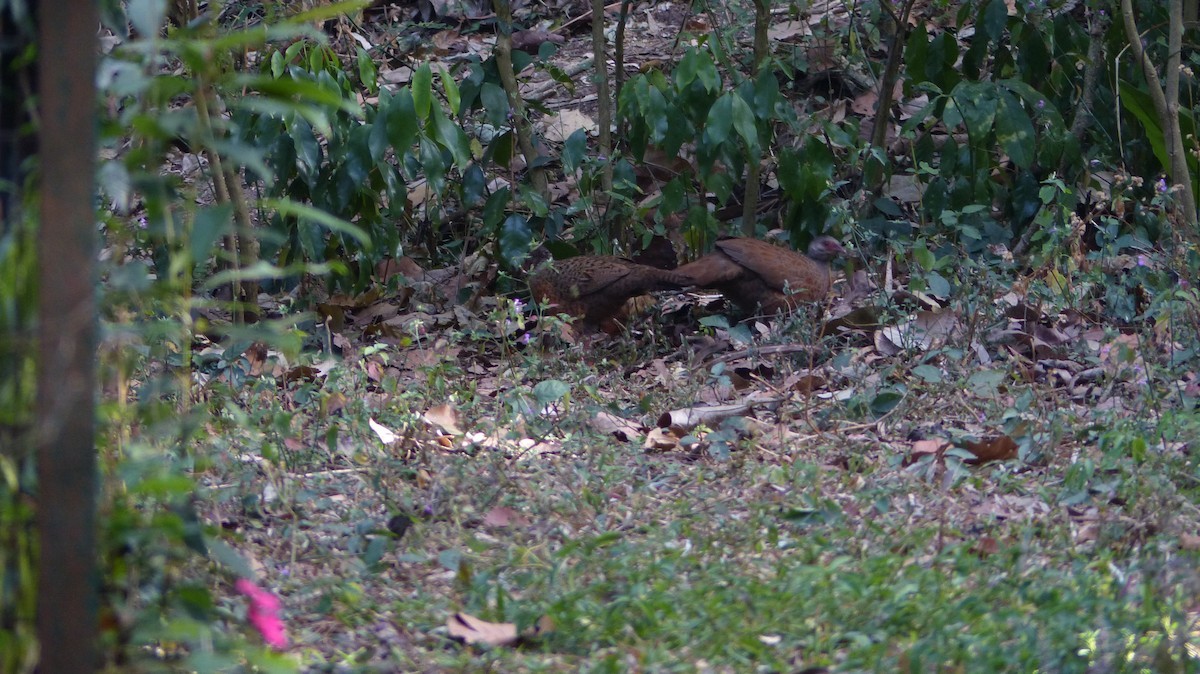Red Spurfowl
A species of Spurfowl Scientific name : Galloperdix spadicea Genus : Spurfowl
Red Spurfowl, A species of Spurfowl
Botanical name: Galloperdix spadicea
Genus: Spurfowl
Content
Description General Info
 Photo By Ashwin Viswanathan
Photo By Ashwin Viswanathan Description
Overall reddish-brown, this large partridge-like bird has a somewhat long tail. The upper parts are brown with dark barring while the face and neck are more grey in the male. The underside is rufous with dark markings and both sexes have a red facial skin patch and red legs with one or two spurs (rarely three or four while females may have none). Downy chicks have an unmarked cinnamon brown head, a dark brown band along the back bordered by creamy stripes edged with thin lines of dark brown. The male of the distinctive Kerala race, G. s. stewarti has all-chestnut plumage, including the head feathers. Both sexes have long feathers on the crown that can be erected into a crest. 
Size
38 cm
Nest Placement
Ground
Feeding Habits
Red Spurfowl consume a varied diet of seeds, berries, fruits like figs, and invertebrates. They typically forage in vegetation, but also on paths and field edges during early morning and evening, often in small groups.
Habitat
The habitat of red Spurfowl encompasses diverse terrains, favoring areas with ample cover such as deciduous scrub and thickets of Lantana or bamboo. These birds are typically found in environments adjacent to cultivated lands and thrive across both arid and humid ecological conditions in hilly regions.
Dite type
Omnivorous
General Info
Feeding Habits
Bird food type
Behavior
Red spurfowl usually forage in small parties of three to five. When walking around, the tail is sometimes held vertical as in domestic fowl. They are quite silent in the day but call in the mornings and evenings. They feed on fallen seeds, berries, mollusks and insects apart from swallowing grit to aid digestion. When flushed, the usually fly a short distance and stay in well-defined territories throughout the year. They roost in trees. The calls include a distinct ker-wick...kerwick... and harsh karr...karrr... notes. The Marathi name Kokatri is echoic in origin. The breeding season is January to June, mainly before the rains. A ground nesting bird, it lays 3-5 eggs in a scrape. Males are monogynous which usually indicates greater male investment in parental duties but they do not incubate. Males have been observed to distract the attention of predators when females with chicks are nearby. The widespread nematode Heterakis gallinae has been recorded in the species in captivity while Ixodid ticks have been noted in the wild. A species of helminth Lerouxinema lerouxi has been described with the red spurfowl as type host. Keratinophilic fungi such as Ctenomyces serratus have been noted from the species. 
Distribution Area
The species is found in scrub, dry and moist-deciduous forests often in hilly country. They are found south of the Ganges across India. They prefer areas with good undergrowth including those formed by the invasive Lantana. 

 Photo By Ashwin Viswanathan
Photo By Ashwin Viswanathan